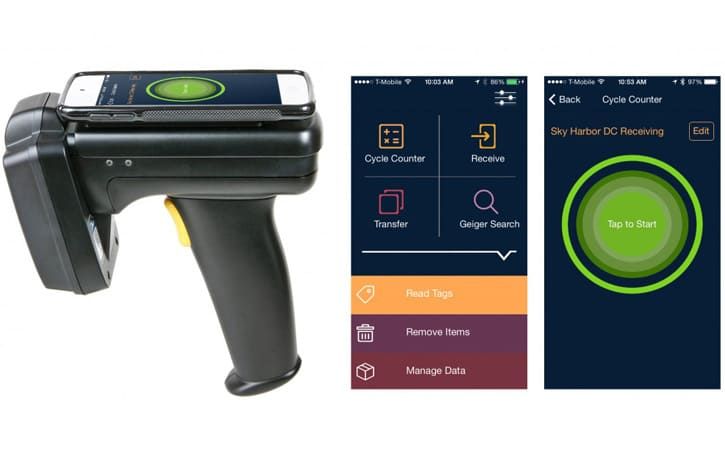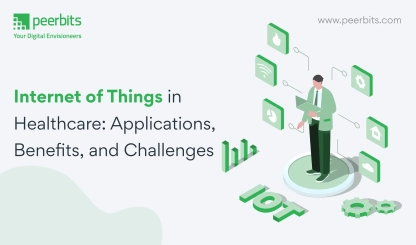Have you ever wondered if your phone could do more than just tap to pay or scan QR codes? Imagine walking into a store, picking up what you need, and walking out, no checkout, no waiting. That’s the kind of experience RFID can help create when used with smartphones.
Today, apps like Flipkart, Uber, and Airbnb have made things faster and easier. But behind the scenes, there’s a lot of data being exchanged in payments like personal info, and order history. Keeping that secure and smooth isn’t always easy.
That’s where RFID (Radio Frequency Identification) comes in. It’s already used in many industries, and now it’s finding its way into mobile apps too. According to Markets and Markets, the RFID market will grow from USD 12.61 billion in 2025 to USD 25.24 billion by 2033, showing how fast it's picking up.
RFID is leveraging on the mobile technology
Many of the mobile applications have managed to provide users with a convenient online experience due to plenty of technological advancements.
One of such technological advances is NFC technology, i.e. a type of HF RFID technology that enables online stores to give users a more convenient online payment option with added security layer.
Leveraging on the perks of using credit and debit cards with NFC chips, customers can pay online with a single tap against an NFC payment station.

There is no chance someone can remove data through the help of magnetic strip since this NFC-driven payment system does not involve the card swiping process. This online payment system was also adopted by Google which led to the rise of Google Wallet.
It contains all the banking card details with plenty of security protocols and enables customers to pay at NFC systems.
However, one disadvantage of using it is that it is restricted by the number of retail stores that have NFC stations and phones that support it.
Deploying RFID for businesses
With RFID's growing presence in the market, many retail stores are now aiming to set up NFC stations to make their in-store experience faster and more connected.
Not only that, even many mobile manufacturing companies have started adding NFC technology into their mobile phones to match the growing demand.
The role of RFID tags lies in its proper implementation as NFC chips are able to examine passive RFID devices and get relevant information from them.
A lot of advertising agencies use it to enhance the net effect of their innovative marketing techniques. Through the help of RFID tags, advertisers and marketers can make plenty of ‘smart’ posters that enable customers to connect more.
Interestingly, all that a user has to do is to tap their NFC-enabled phones against these ‘smart’ posters. Since RFID tags are affordable and highly useful, they serve as the perfect source for enhancing customer engagement.
Utilizing RFID
RFID technology has the potential to redefine almost every industrial sector as it helps customers in having sufficient access to the relevant information about every online retailer’s business offerings.
RFID devices also work well with constant customer engagement as they notify them about every single update on a regular basis.
These RFID tags also allow customers to keep track of their online orders and help retailers give relevant updates regarding their orders. This HF RFID technology can also be used in libraries to enable NFC communications.
The overall idea seems to be quite fascinating as it allows you to communicate with anything through your NFC-enabled device. It also helps users to store event tickets, allowing them to keep their personal data to have better access without much hassle.
In the US, few developments have been seen in the field of RFID technology. Certainly, enhancing the accuracy of data security systems to a great extent is the most resourceful utility that RFID tags have.
Uses of RFID for mobile technology
- RFID class-recognition labels are utilized for instance identification that normally involves information about where in the background a set of a database is.
- Plenty of logistic-driven companies are making the most out of location identification. This activity gets smoother once the reader is allocated to a known location. It is with this system the current place of item can be identified. Some of the top postal services have already deployed such RFID features for streamlining their tracking services. This includes companies like UPS, FedEx, USPS and Finland Post.
- Asset Tracking is one of the most common uses of RFID. It because the companies can put RFID tags on their assets where if in case they get lost or stolen, or even if remains underutilized they can track and know about its entire utility history. In fact, each type of RFID systems can be used for asset management.
RFID to replace barcode
The optical scanning method of barcode tags requires labels to be “viewed” by lasers. It also needs to be in alignment with the line of sight. This makes it difficult to scan the same.
For the barcode reader to function in a proper manner, the readers must be legitimately situated concerning each other. RFID innovation empowers label reading from a more prominent distance, even in difficult-looking situations.
The Active Wave RFID tags come with electronic memory just like the way it has in computers or digital cameras, which is useful in storing information about the inventory, equipment, and even user details in a mobile phone.
The information is dynamic enough to be updated periodically or as the need arises.
The advantages of RFID
- Ceasing the dependency over line of sight
- Tag’s fragility to stand a harsh environment
- High range readability
- Database portability
- Dynamic reading and writing capabilities
- Real-time tracking of equipment, items, and people
- RFID technology is cost-saving and improved revenues can be achieved quickly
- Holistic data collection
- Enhanced access control
- Assurance in container security
- Provision to track industrial Activities
Conclusion
RFID has come a long way, and its potential is only growing. From retail to logistics, it’s helping businesses run smoother, faster, and smarter. Sure, there are still concerns about data privacy, but most of those are based more on assumptions than real-world risks.
If you're planning to get mobile application development with RFID features, now’s a great time to get started. At Peerbits, we craft custom mobile application solutions that fit your business goals, especially when it comes to integrating RFID.
With more businesses setting up NFC stations to improve service and speed, RFID is no longer just a tech trend; it’s becoming a must-have.









